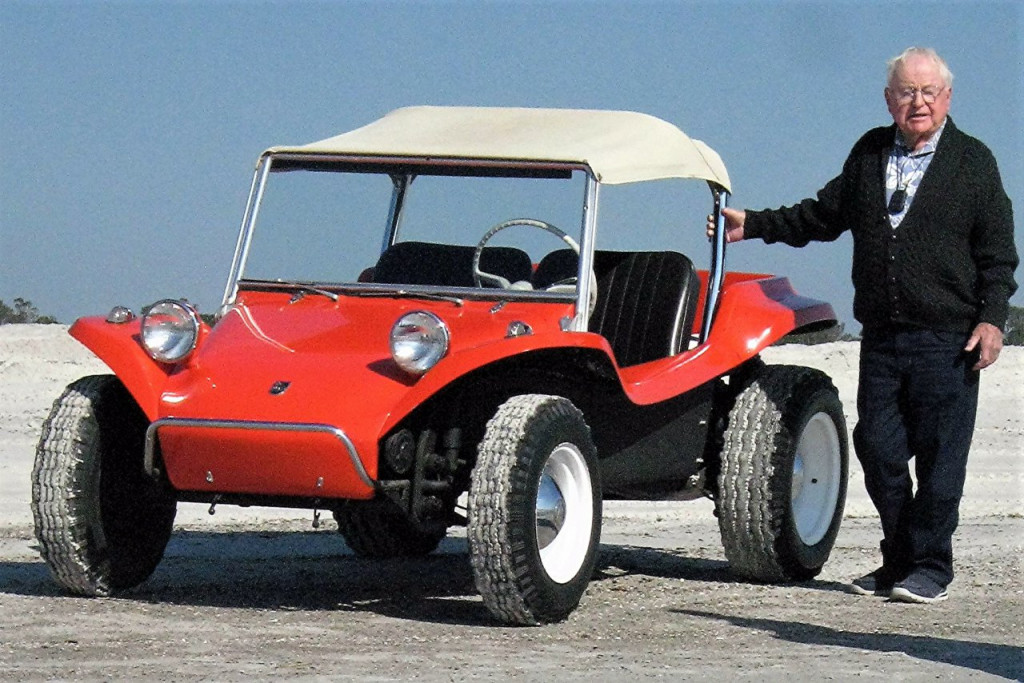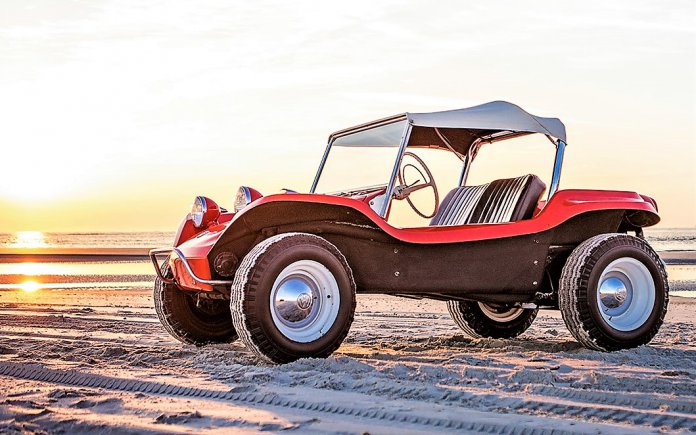The classic Meyers Manx dune buggy is set to return as an electric car, according to an Autoweek report published last week.
The Manx was the brainchild of Bruce Meyers, who died last year at the age of 94. He built the first Manx in a Newport Beach, California, garage in 1964 using components from a Volkswagen Beetle and a fiberglass body. The Manx became an icon of Southern California beach and hot rod culture, and proved successful in off-road racing. It also spawned numerous knockoffs.
Before his death, Meyers sold the Manx business to venture capitalist Phillip Sarofim and automotive designer Freeman Thomas, whose résumé includes the VW New Beetle and the original Audi TT.

Bruce Meyers in a recent photo with the original Meyers Manx | Volkswagen
Details on the electric Manx are few, but the Autoweek report said the electric buggy will use battery tech from a company called Coreshell, in which Sarofim has invested. Coreshell has devised a coating for the cathode and anode of lithium-ion battery cells the company claims can increase usable capacity and battery lifespan, as well as reduce the possibility of fires.
The actual size of the battery pack hasn't been disclosed, but designers are aiming for a 200-mile range, according to Autoweek. The electric Manx will likely weigh 1,600-1,700 lb, about 400 lb more than the original, the report said.

The Meyers Manx became an emblem of California beach culture | Volkswagen
The revived Manx will reportedly have about 240 hp. The company is also considering a gasoline version powered by an air-cooled VW flat-4 like the original Manx, to be sold as a kit car.
In a phone interview with Autoweek, Thomas indicated the design will be an evolution of the original Manx, with some changes to accommodate the electric-powertrain components.
No firm reveal date has been discussed, but Thomas said the company expects to have running prototypes ready next year.